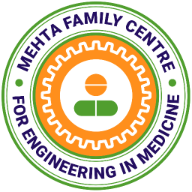In conversation with the first author, Aman Nikhil
Evaluating potential of tissue-engineered cryogels and chondrocyte derived exosomes in articular cartilage repair.
Nikhil Aman and Kumar Ashok.
Biotechnol Bioeng. 2021 Nov 1.
 What gap does your study addresses?
What gap does your study addresses?
Aman Nikhil: Cartilage repair still faces limitations like phenotype instability and poor integration with surrounding tissue. In our study, we utilized chondrocyte exosomes as paracrine signaling molecules which will help to maintain the phenotype of formed cartilage. Further, these exosomes were utilized in combination with chondroitin sulfate releasing cryogel which was shown to act as exosome delivery system and due to its properties of high compressibility and elasticity, it will integrate well on swelling with the defect area.
 What was the most challenging part of the study?
What was the most challenging part of the study?
Aman Nikhil: In this study we strived to utilize chondrocyte exosomes as a cell free therapy and designing different cryogel scaffolds to better mimic the architecture and constituents of the cartilage and subchondral bone. So, we proposed the combinatorial approach of exosome laden cryogels for cartilage regeneration. Further, to overcome the problem of delamination of bi-layered cryogel, the two layers were joined in single cross-linking reaction with gelatin as a common polymer in both layers.
How do you evaluate the translation potential of this study?
Aman Nikhil: To evaluate the translation potential, animal experimentation is required where the potential of these exosome laden cryogels can be evaluated. For cartilage, higher animal models like goat, sheep or horse are preferred because of the similarity of their stifle joint to humans. Although preliminary studies can be performed in rabbit (Gupta et al., 2017) where the biocompatibility and regeneration potential can be tested.
Where do you see the application of this study, particularly in the Indian context?
Aman Nikhil: Indian population is prone to osteoarthritis (OA) which is musculoskeletal joint disorder affecting cartilage having prevalence of 22% to 39%. Approximately, 45% of women over the age of 65 have OA related symptoms (Cui et al., 2020). In addition, trauma injuries (accidents, sports injuries) also cause damage to knee cartilage and subchondral bone. So, tissue engineering strategy mentioned in this study has application for treatment of such osteochondral defects.
Cui A, Li H, Wang D, Zhong J, Chen Y, Lu H. 2020. Global, regional prevalence, incidence and risk factors of knee osteoarthritis in population-based studies. EClinicalMedicine 29:100587.
Gupta A, Bhat S, Chaudhari BP, Gupta KC, Tägil M, Zheng MH, Kumar A, Lidgren L. 2017. Cell factory‐derived bioactive molecules with polymeric cryogel scaffold enhance the repair of subchondral cartilage defect in rabbits. J. Tissue Eng. Regen. Med. 11:1689–1700. https://doi.org/10.1002/term.2063.

